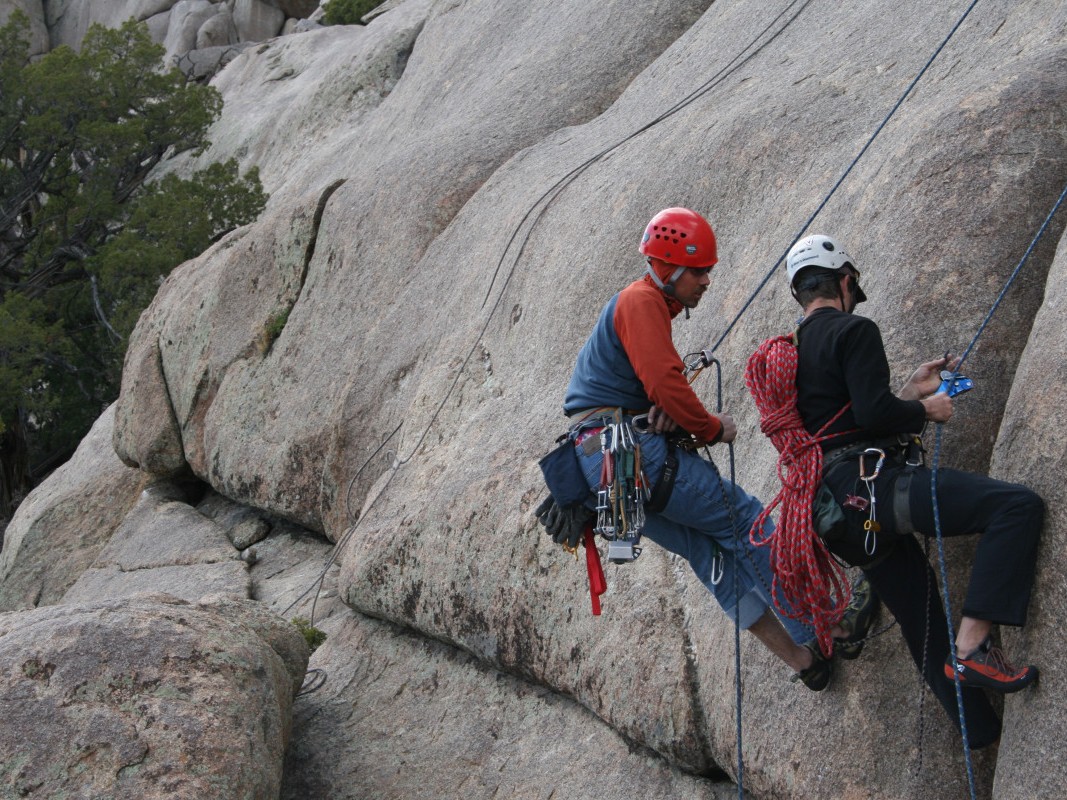
The common image of a first responder is someone with a snappy set of gloves smoothly bandaging a spurting wound or administering an EpiPen to a patient having an anaphylactic reaction. Injuries, we imagine, are easy to see and easy to fix.
While treating physical wounds seems like the most important way a first responder can help a patient, there’s a lot that we can do to care for a patient’s mental health, especially during and right after a traumatic event.
Psychological First Aid is a set of tools NOLS Wilderness Medicine has integrated into our curriculum to help patients as they respond to traumatic events. Tod Schimelpfenig, NOLS Wilderness Medicine’s curriculum director, writes, “We understand that treating the emotional impact from responding to or experiencing stressful events is as important as the physical first aid we practice.”
To help you better manage and prevent stress injuries, like post-traumatic stress, here are five of the tools we teach in our Wilderness First Responder and Wilderness EMT courses.
The 5 Components of Psychological First Aid
1. Create a Sense of Safety
Creating a sense of safety means you communicate to the brain’s fight or flight system that the stressful situation is over. You can do that by shielding the patient from a disturbing scene or explaining to the individual that they’re safe. Reinforce this by showing them what you’ve done to make the scene safe, like moving them away from a precarious edge or pointing out that the thunderstorm has passed and the weather has calmed.
2. Create Calm
This is important both before and while responding. Speaking and acting calmly can show your patient they’re in a safe place and can start calming themselves. If you’re struggling to calm yourself or your patient, use simple tools like taking a deep breath, counting to four, then letting your breath out slowly, and coaching your patient to do the same. It’s hard to calm someone else when you don’t feel calm yourself, so check your own composure before helping your patient.
3. Create Self and Collective Efficacy
Efficacy is your ability to produce a desired result. You can help your patient foster self-efficacy by making them an active part of their own rescue. Remind your patient of their existing strengths, allow them to care for themselves or help their companions, and involve them in decisions about their care. This helps them overcome the feeling of helplessness that sometimes comes with a traumatic event. They’re no longer a victim, but a part of the team.
4. Create Connection
Creating connection helps the patient tap into the social supports that surround them. You can create connection by building an on-scene relationship with your patient: use their name and build a rescue partnership. This also includes connecting the patient with loved ones or even pets.
5. Create Hope
Hope in this context means the belief that, although the current situation may be grim, it can get better. To build hope, point to specific, accurate, and positive facts about the event, and discuss next steps that are realistic and predictable. Maintaining hope is as important for the individual patient as it is for your team as you provide care.
These tools, while not professional mental health interventions, are based on the latest mental health research and are available for anyone to use. Many individuals find these tools so powerful that they shine a light on their own experiences of stress.
Safety. Calming. Self-efficacy. Connection. Hope. Pack them in your remote medicine kit—you won’t regret it.
Treatment Principles for Psychological First Aid

Editor’s note: Reading about these principles is only the first step to giving effective psychological first aid. We encourage you to get appropriate training, which you can learn as a part of a NOLS Wilderness Medicine course.
This post was adapted from the Spring 2017 issue of The Leader under the title “Psychological First Aid Toolkit—What’s in Yours?”
Written By
Laura McGladrey
Laura McGladrey, aka “Glad,” is a family and psychiatric nurse practitioner who specializes in emergency medicine, mental health and traumatic stress, especially in the wilderness and remote parts of the world. She has been an instructor with NOLS Wilderness Medicine since 1999.




.jpg)